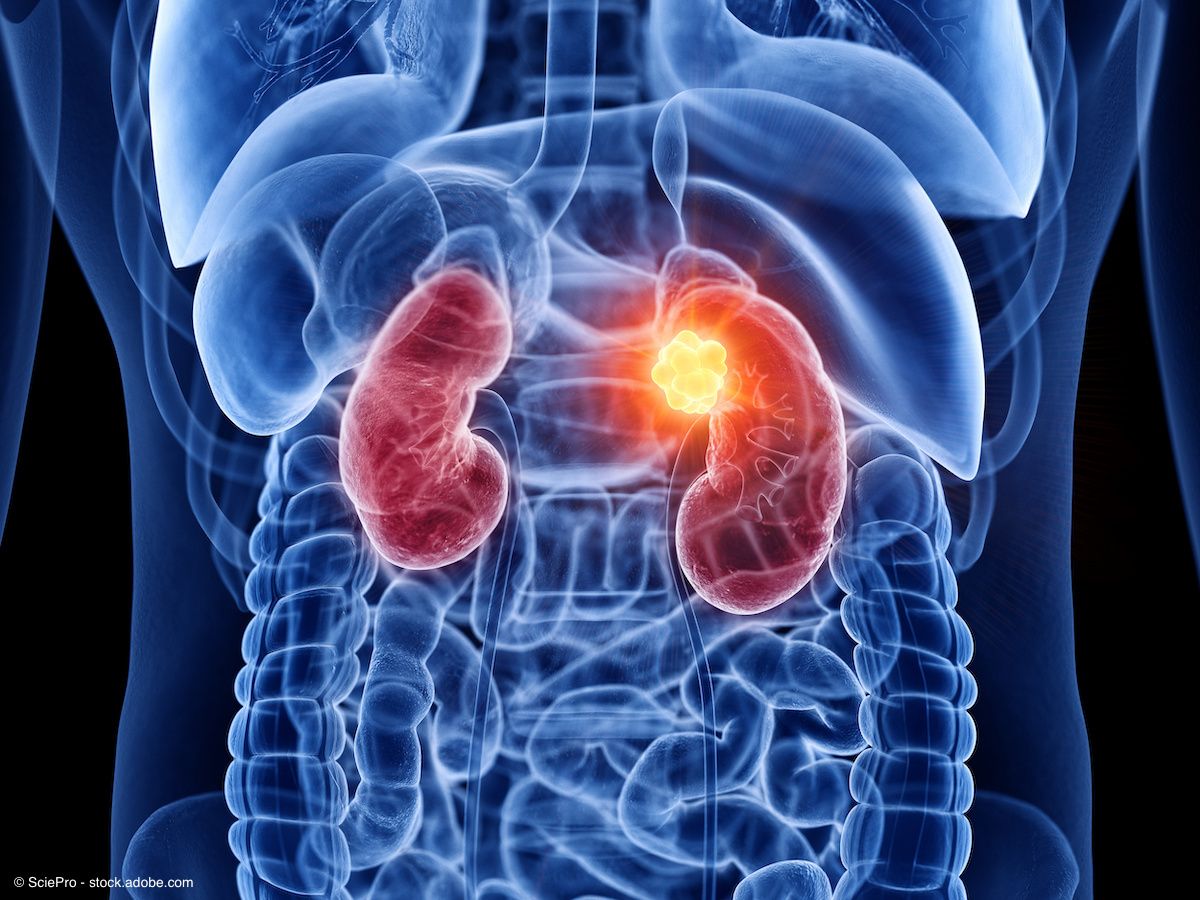News
Article
No clinical benefit observed with talazoparib plus avelumab in advanced kidney cancer
Author(s):
In the first clinical study (NCT04068831) combining poly-ADP ribose polymerase (PARP) inhibitors with immune checkpoint blockade, talazoparib (Talzenna) plus avelumab (Bavencio), in patients with advanced kidney cancer, clinical benefits were not seen in multiple genomically defined metastatic renal cell carcinoma (RCC) cohorts or renal medullary carcinoma (RMC).1
The single-center, investigator-initiated, phase 2 trial consisted of 2 genomically selected advanced kidney cancer cohorts.

Among patients in cohort 1 of the study, overall response rate (ORR) was not observed, and 1 patient was not evaluable due to missed doses. Seven patients in this cohort had stable disease (SD) as the best response, and the median progression-free survival (PFS) was 3.5 months (95% CI, 1.0-3.9). In cohort 2, the ORR was also not observed, and 2 patients achieved SD as the best response. The median PFS was 1.2 months (95% CI, 0.4-2.9).
For safety, the most frequently observed treatment-related adverse events of any grade included fatigue (61%), anemia (28%), nausea (22%), and headache (22%). Moreover, there were 7 grade 3/4 events and no grade 5 events.
The single-center, investigator-initiated, phase 2 trial consisted of 2 genomically selected advanced kidney cancer cohorts. In the first cohort of 10 patients with Von Hippel-Lindau-altered clear cell RCC (ccRCC), patients had been previously treated with immune checkpoint blockade.2 Patients must also have had radiographic evidence of disease progression after treatment with at least 1 prior PD-1 or PD-L1 agent and 1 prior VEGF inhibitor and have received a maximum 3 prior lines of therapy.
In cohort 2, 8 patients were included, 6 of which had previously been treated with immune checkpoint blockade. Of the 8 patients, 4 had FH-deficient RCC, 1 had SDH-deficient RCC, and 3 had RMC. These patients were required to have received at least 1 prior line of therapy, have radiographic evidence of disease progression after treatment with at least 1 prior line of therapy, and for patients with RMC, they must have had prior radiographic evidence of disease progression on/after at least 1 line of chemotherapy. There were no maximum lines of therapy in this cohort.1
All patients were required to have adequate hematologic, renal, and hepatic function, an ECOG performance status of 0-1, measurable disease by RECIST v1.1, at least 1 measurable lesion should not that had not been previously irradiated, hysterectomy or bilateral oophorectomy surgery, medically confirmed ovarian failure, and have recovered of baseline CTCAE v5.0 grade ≤1 toxicities related to previous therapies, unless the patient’s adverse events are clinically non-significant and/or if they are on stable on supportive therapy.
Both cohorts of patients received talazoparib at a dose of 1 mg daily and avelumab 800 mg via intravenous infusion every 14 days in 28-day cycles. Investigators evaluated the primary end point of ORR by immune response evaluation criteria in solid tumors at 4 months. Secondary end points included PFS, overall survival, and safety.1,2
REFERENCES:
- Kotecha RR, Doshi SD, Knezevic A, et al. A phase 2 trial of talazoparib and avelumab in genomically defined metastatic kidney cancer. Eur Urol Oncol. Published online November 7, 2023. doi:10.1016/j.euo.2023.10.017
- Talazoparib and avelumab in participants with metastatic renal cell carcinoma. ClinicalTrials.gov. Updated July 7, 2023. Accessed December 7, 2023. https://clinicaltrials.gov/study/NCT04068831
Newsletter
Stay current with the latest urology news and practice-changing insights — sign up now for the essential updates every urologist needs.

















